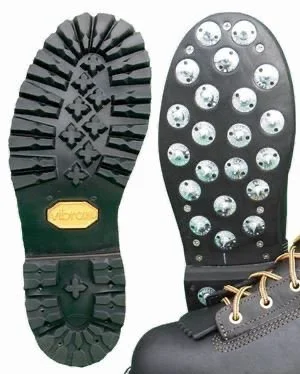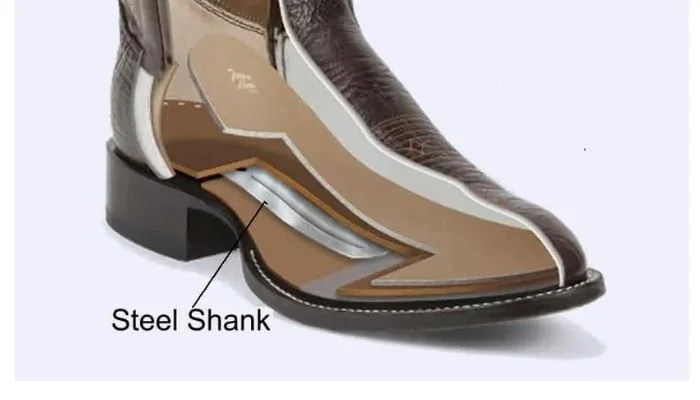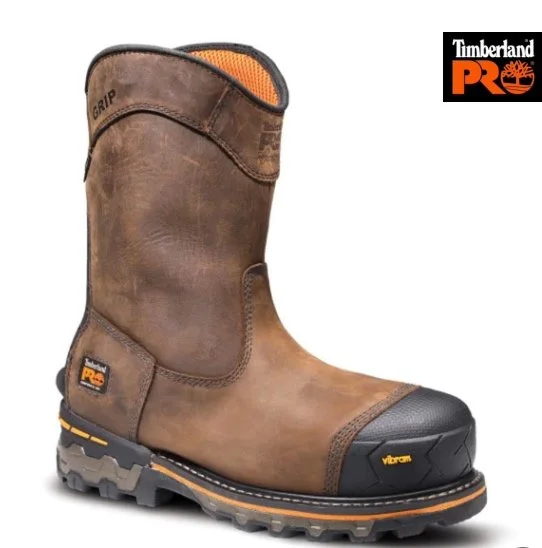Tree Planting Boots: What You Need to Know
There’s a saying amongst carpenters, that says, “you should spend a lot of money on your boots and your bed because when you’re not in one, you’re in the other.” Planting is very similar. Boots are very important for planters - They’re the main connection point between you and the ground, so it’s important that you buy the right tool for the job. Planters spend hours on their feet every day at work, and must navigate steep and technical terrain in the process. That means that the wrong boots will lead to a whole world of pain in the long term. Finding the right boot can be a complicated process, especially for the first-time buyer. To make it a bit easier, we built this guide to answer some of the questions you may have when buying your first (or 50th!) pair of tree-planting boots.
What Features Do I Need to Look for?
To Caulk or Not to Caulk:
The first thing you should know is whether you will need caulks (AKA Calks or corks) or not. Caulked boots have spikes on the bottom of the soles, which are a must for steep, technical, or wet terrain. Caulks are mandatory on many planting sites, especially in BC where the terrain will be more rugged. Even when they aren’t required, things can get pretty slippery, especially in the rain, and caulks can be super handy. In general, we recommend that you own at least one pair of caulked boots in your line-up, even if you aren’t planting where it’s required. You can have caulks installed on normal boots, however, it can be quite expensive, so it’s usually only worth it for high quality boots. If you would like to get caulks installed on a pair of boots, we recommend Webb Boot Company.
Shank Style:
The shank is a piece that sits between the heel and toe of a boot. They’re usually made of steel, and are there to provide rigidity. A boot with a full shank will be more supportive and creates a platform to stand on, making them best for people who climb a lot (arborists, roofers, ice-climbers). Boots with half-shanks are more flexible. When walking, this allows the foot to bend more naturally, and is more comfortable for longer when just walking. We recommend that planters get boots with half shanks so that they can walk with less fatigue throughout the day.
Steel Toes:
Some people like the added protection of a steel-toed boot, however, they aren’t mandatory for the job. The short answer is that this one comes down to preference.
- CSA Oshawa 8” Boot: Keen Footwear - Timberland PRO Boondocks Men’s Pull-On: Work Authority
Waterproofing:
Nobody likes to put on a pair of wet boots in the morning. Keeping your feet dry is super important for your comfort, morale, and health. Moisture is also a breeding ground for bacteria, so wearing wet boots every day isn’t just cold, uncomfortable, and smelly, but can also pose health risks like sore or blistered feet, or trenchfoot in more serious cases. Waterproof rubber boots are a must for most people. “Waterproof” GoreTex boots, or oiled leather can be great for mud or light rains but will always soak through in a real rain. The only surefire way to always have dry feet is to wear a rubber planting boot.
- Timberland PRO Boondocks Men’s Pull-On: Work Authority - Muck Boot Company: Men’s Apex Mid Zip
How many pairs of boots do I need?
The answer to this question is largely dependent on your ability to keep your boots dry. If you’re living in a camp, owning multiple pairs of boots is a borderline must, because you aren’t going to be able to effectively dry them overnight. If you’re set on only owning one pair, then make sure they’re rubber so they’ll never be completely soaked in the rain. With that said, we still recommend more than one pair, because rubber boots aren’t always as comfortable and don’t breathe as well.
Lodging for most Leader Silviculture projects is in a motel. Here, we recommend that you buy a boot drier to ensure that your boots always stay bone dry. In this case, you can technically get away with one pair of rubber boots, however, we still recommend more than one set. Whether you’re in a camp or a motel, we think most experienced planters should ideally own at least three pairs of boots:
- Rubber boots - For rainy days
- Standard Pair with Caulks - As your everyday boots.
- Standard Pair without Caulks - As your reserve pair, or for better conditions when caulks aren’t needed.
How Should they Fit?
The most important factor in finding a comfortable boot is making sure it fits properly. Too small, and they create pressure points in your foot and cause a lot of pain. Way too big, and they’ll cause blisters. The biggest thing is that you want them to be big enough that you can comfortably wear a pair of thick socks inside them, and some space in the toes so that your toes don’t jam against the end when you’re walking downhill. The best way is fit the boot while wearing thick socks, so you won’t ever be surprised.
What Options Are There?
There are many different types of boots, and all of them do things a little different. There isn’t really one correct answer for which style to get. It will ultimately come down to the way you work, where you work, and your budget. There are a few brands that are generally respected in the industry, such as Hoffmann, Viking, and Viberg. These boots range in price, with Viking generally the cheapest, and Viberg at most expensive. If it’s your first year, you can probably get by with a cheaper pair, but, if you’re willing to spend some extra money, you will likely find that a more expensive, well constructed boot will be more comfortable, last longer, and will be worth the higher price:
Hiking Boot:
The most basic boot you’ll encounter is a standard hiking or hunting boot. These boots are light, more flexible, and allow you to move freely. Some hikers have caulks preinstalled, but it’s quite uncommon. If you’re working in an area that doesn’t mandate caulks, this could be fine, but when they’re mandatory, you’ll probably need to look elsewhere or get them installed later.
- Keen Pyranese: https://www.mec.ca/en/product/5054-496/pyrenees-hiking-boots
- Zamberlan Vioz GT: Link
- Rhino Calk (pre-caulked): Hoffman Boots
Logging Boots:
As the name suggests, logging boots are purpose-built for the Silviculture industry. They will often be firmer than a hiking boot, and are more likely to come with caulks. They often land higher up the leg, offering more protection and support but less mobility. If you’re not looking to mess around with getting caulks installed on boots, these could be the best option for simplicity and quality.
Some Great Options:
- Hoffmann Georgia - https://hoffmanboots.com/8-inch-georgia-vibram-or-calk-sole
- Danner Quarry - https://hoffmanboots.com/8-danner-quarry-calk-vibram
- Viberg Chokerman- Link
Mountaineering Boots:
In recent years, people have begun gravitating towards mountaineering boots. They’re designed to handle rugged and difficult terrain with ease, and are built to be comfortable when walking for hours every day. Some models have plastic shells, making them virtually indestructible, but some complain that they are heavy. You’ll have to get most mountaineering boots caulked, but if you’re a career planter that wants to buy a boot that will do it all and for a long time, then mountaineering boots could be your new go to:
- La Sportiva Nepal Evo - Link
- Scarpa Invernos - https://us.scarpa.com/inverno
- Scarpa Fuegos - https://us.scarpa.com/fuego
Rubber Boots:
Even within the world of rubber boots, there is a lot of variety. You can find rubber caulks in most of the styles above. Having at least one pair of waterproof boots in your collection is a must. Luckily there are some great options on the market.
- Hoffmann LW: 16” Xtra-Tuf Non-Insulated / Insulated Boot
- Viking Spiked Forester Boots: Viking Spiked Forester Boots
- Viking Bushwacker: VW59-1 Viking® Bushwhacker Boots





